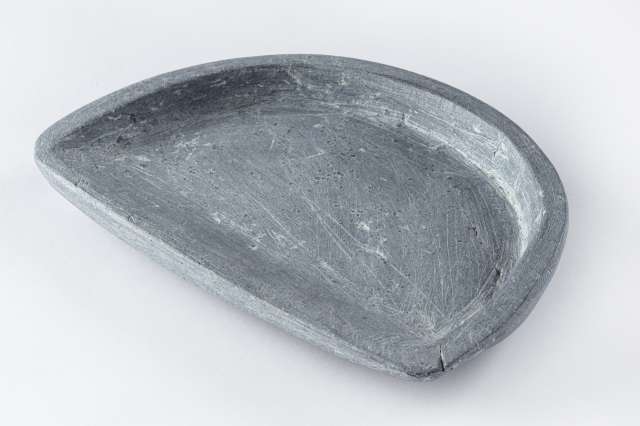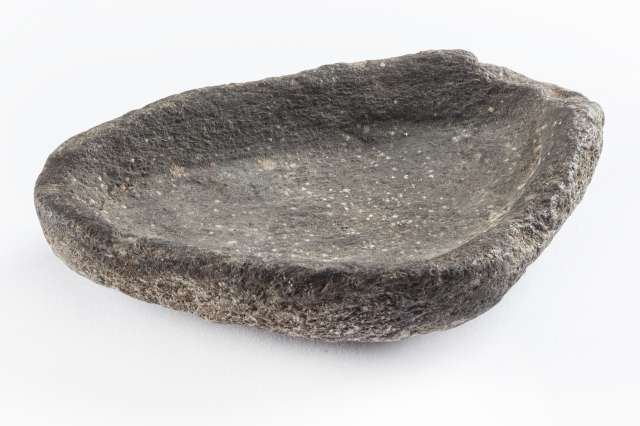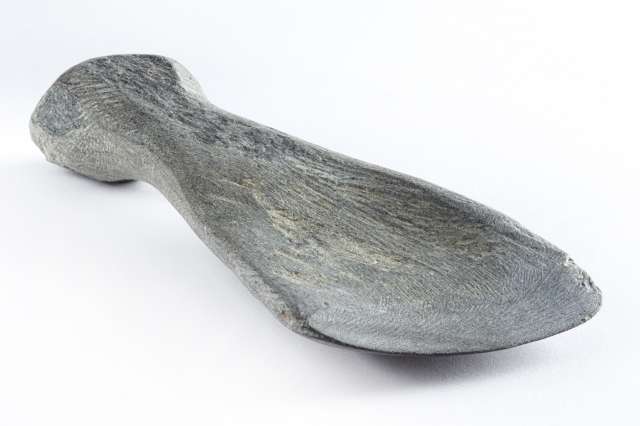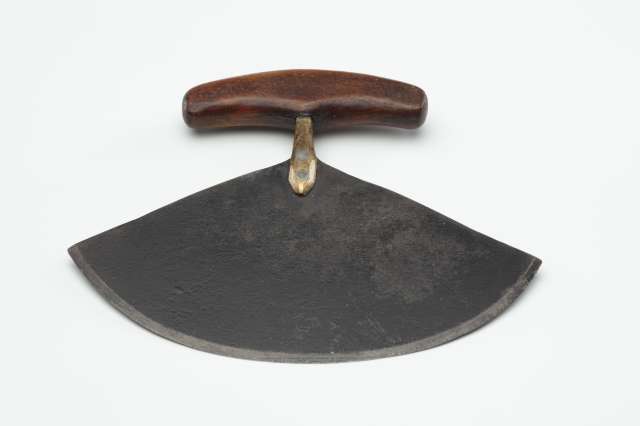Oil lamps (qulliq and alliq)
An oil lamp, called a qulliq, was indispensable to daily Inuit life. Though made by men, it was maintained and used by women.
Generally made of soapstone, these half-moon-shaped lamps could come in various sizes. The larger ones were used to heat homes, to provide light, to cook food, and to dry meat and clothing. The smaller ones, named alliq, were used more to light up the entrance or floor of the home and were taken along for travel or hunting trips across the land. The little alliq was also used by hunters. They would carry it in their caribou-skin parka to keep warm while they waited long hours, motionless, over a seal's breathing hole (aglu).
The fuel was oil from the blubber of various sea mammals, which would be poured into the hollow of the oil lamp. At the edge of the qulliq stood a wick of Arctic cotton that was immersed in the lamp oil. Once lit, the wick provided a flame over much of its length. Women would keep the flame going by trimming it with a poker (taqqut). A smaller poker was used by those hunters who kept warm by carrying an alliq in their parka.
Still in use today, the qulliq is used mainly to provide light and warmth for cabins on the land, for houses in the community during power failures, for hunting trips, and for various ceremonies. It can be made from an aluminum frying pan, by cutting the pan into the shape of a traditional oil lamp. The fuel is store-bought cooking oil. Nowadays, hunters no longer use a little alliq when waiting at an aglu. Their wait time has been reduced by different hunting techniques that have proven more effective.






